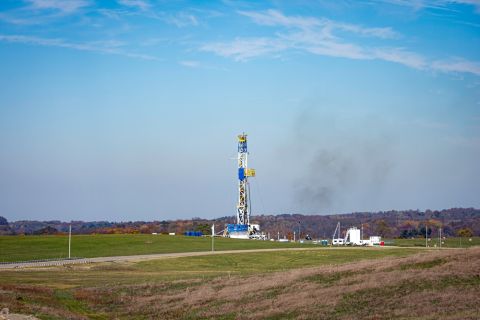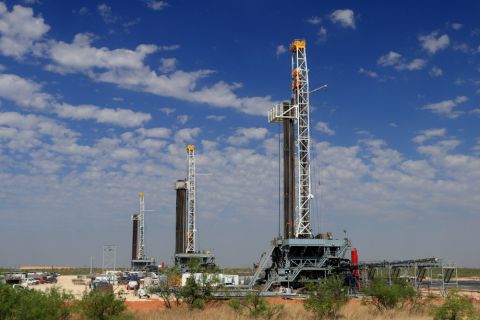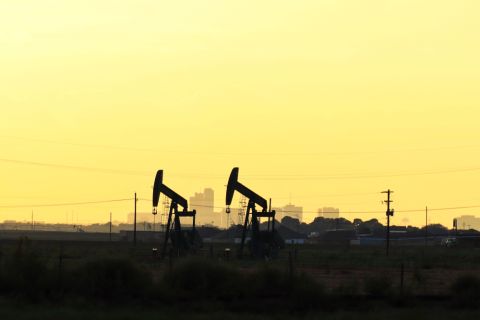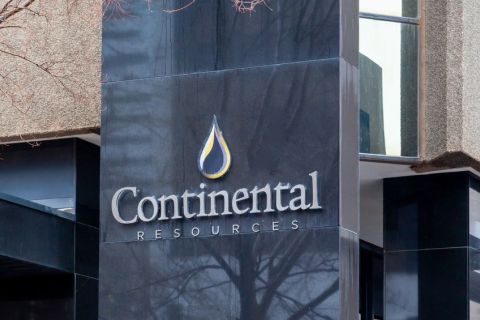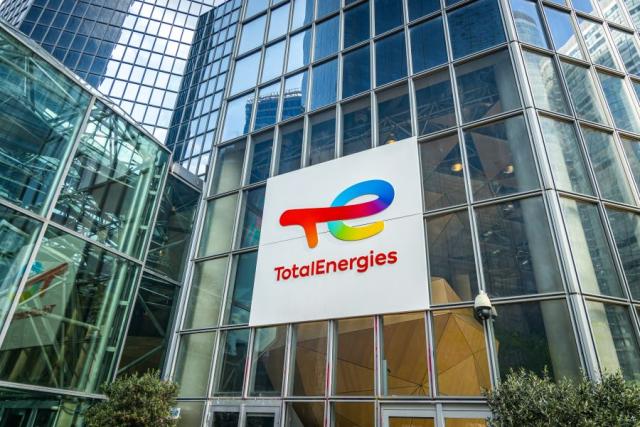
TotalEnergies’ headquarters in Paris. (Source: Shutterstock.com)
TotalEnergies chairman and CEO Patrick Pouyanné said $100/bbl is not impossible this year.
The executive argued the supply side doesn’t offer a lot of margin due to very low inventories coupled with OPEC+ discipline to maintain oil prices above $80/bbl and lower U.S. shale supply.
“From our perspective, there is more support for a price higher than $80/bbl than a lower one, so I would not be surprised to see $100/bbl oil coming back,” Pouyanné said Feb. 8 during the company’s webcast to discuss 2022 results and 2023 objectives.
“We expected more supply from U.S. shale as was the case previous to COVID-19, but [this] is no more the case… shareholders want some returns and today are speaking more about returns than growth,” he continued.
Pouyanné said global oil demand could grow by 1.9 MMbbl/d to almost 101.7 MMbbl/d in 2023, which would be a record year. “So, the reality of our world is that oil demand continues to grow,” he said despite net-zero plans established by many nations and companies.
Financial results, favorable commodity markets
The Paris-based oil giant reported International Financial Reporting Standards net income of $20.5 billion in 2022, up 28% compared to 2021, including nearly $15 billion in provisions related to Russia (for an adjusted net income of $36.2 billion). The company generated $45.7 billion of cash flow.
TotalEnergies CFO Jean-Pierre Sbraire said the company benefited from favorable commodity markets due to the Russia-Ukraine conflict.
The company’s return on equity was 32.5% in 2022 compared to 16.9% in 2021, while return on average capital employed was 28.2% compared to 13.9% respectively, “demonstrating the quality of its global portfolio,” TotalEnergies said Feb. 8 in a separate press release.
In 2022, approximately 128.9 million shares were repurchased, representing 4.92% of share capital, for $7 billion. In 2023, TotalEnergies is targeting a cash pay-out between 35% and 40%, and its shareholder return policy will combine a 7.2% increase to 0.74 euro/share in interim dividends and share buybacks of $2 billion in the first quarter.
“The challenge now is to keep our breakeven below $25/boe,” Pouyanné said.
Slight uptick in capex and production in 2023
The French oil giant expects net investments (organic investments plus net acquisitions) of $16 billion to $18 billion in 2023, including $5 billion for low-carbon energies. Net investments were $16.3 billion in 2022.
TotalEnergies aims to boost combined production by 2% to around 2,500 Mboe/d in 2023, driven mainly by three start-ups in Oman (Block 10), Brazil (Mero 2) and Azerbaijan (Absheron). Production was around 2,440 Mboe/d in 2022 after removing production related to Novatek in Russia.
TotalEnergies’ production was officially around 2,765 Mboe/d in 2022, but since Dec. 31, production of 300 Mboe/d in 2022 related to its participation in Novatek is no longer consolidated, the company said.
European gas driving LNG markets
Russia’s invasion of Ukraine in early 2022 disrupted piped gas and LNG supply flows to Europe, Pouyanné said. Global LNG supply/demand reached 400 metric tons (mt) in 2022 and is expected to rise to around 410 mt in 2023, compared to 379 mt in 2021.
In 2022, Europe increased its demand by around 48 mt while around 16 mt was diverted from China and 10 mt from Bangladesh and other countries.
“The LNG supply in Europe has been possible because we took all the LNG out of other countries, which by the way upshifted to coal,” Pouyanné said. “So, yes the security of supply of Europe has been secured, but at the expense somewhere of the emissions of other countries.”
RELATED
Germany to Inaugurate Deutsche Ostsee LNG Import Terminal
As a result of western sanctions on Russian gas and Moscow’s decision to send less gas to Europe, Europe could import between 130 mt and 140 mt of LNG and up to 20 mt of piped gas from Russia in 2023, Pouyanné said, but warned of potential tensions by mid-year between the different markets for LNG.
This compares to 2022 when Europe imported 115 mt of LNG and 44 mt of piped gas from Russia with storage levels ending the year near 85% full and 2021 when imports amounted to 67 mt of LNG and 100 mt of piped gas from Russia with storage levels around 54% full.
Recommended Reading
Brett: Oil M&A Outlook is Strong, Even With Bifurcation in Valuations
2024-04-18 - Valuations across major basins are experiencing a very divergent bifurcation as value rushes back toward high-quality undeveloped properties.
Ohio Oil, Appalachia Gas Plays Ripe for Consolidation
2024-04-09 - With buyers “starved” for top-tier natural gas assets, Appalachia could become a dealmaking hotspot in the coming years. Operators, analysts and investors are also closely watching what comes out of the ground in the Ohio Utica oil fairway.
Occidental to Divest Some Permian Assets after Closing CrownRock Deal
2024-02-21 - Occidental CEO Vicki Hollub said plans to divest non-core Permian assets would come after closing the pending acquisition of CrownRock — but reports have since emerged that the company is considering selling its share of Western Midstream Partners, valued at about $20 billion, according to Reuters.
Dallas Fed Energy Survey: Permian Basin Breakeven Costs Moving Up
2024-03-28 - Breakeven costs in America’s hottest oil play continue to rise, but crude producers are still making money, according to the first-quarter Dallas Fed Energy Survey. The situation is more dire for natural gas producers.
Continental Resources Makes $1B in M&A Moves—But Where?
2024-02-26 - Continental Resources added acreage in Oklahoma’s Anadarko Basin, but precisely where else it bought and sold is a little more complicated.



